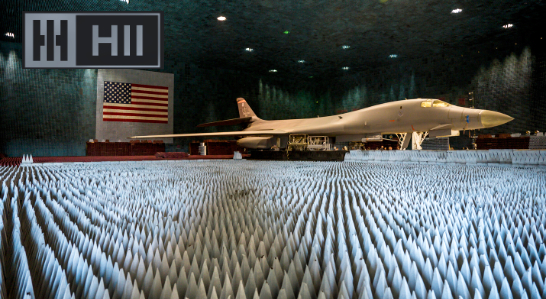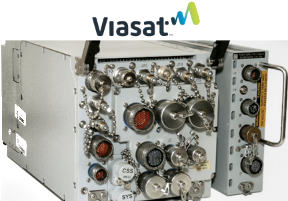Leonardo DRS Awarded Million$$$ Contract For Advanced Thermal Weapon Sights
Leonardo DRS, Inc. (“DRS”) received a contract that was originally awarded earlier this year to produce the company’s nexgen thermal weapon sights for the U.S. Army — the firm-fixed- price contract from the U.S. Army Contracting Command is valued at $579 million over five years.
The Leonardo DRS Electro- Optical Infrared Systems (EOIS) business will produce advanced Family of Weapons Sights – Individual (FWS-I) systems for its U.S. Army customer.

Using DRS’ uncooled thermal imaging technology, FWS-I is a stand-alone, clip-on weapon sight that connects wirelessly to helmet-mounted vision systems including the enhanced night vision goggle binoculars (ENVG-B) and the next-gen integrated visual augmentation system (IVAS) and provides rapid target acquisition capabilities to the soldier.
The FWS-I gives users the ability to acquire targets day or night and in smoke or fog, which provides strategic and tactical advantages to the soldier.
At the core of the technology is decades of Leonardo DRS experience in the uncooled thermal weapon systems field.
The FWS-I employs a proprietary vanadium oxide micro- electromechanical focal plane array that requires no visible light to operate. Production of the FWS-I will be in the company’s Electro- Optical Infrared Systems facility in Melbourne, Florida.
“We are proud to continue to provide this cutting-edge technology that ensures our soldiers will have the most advanced weapon sight systems on the battlefield today, and well into the future,” said Jerry Hathaway, senior vice president and general manager of the Leonardo DRS Electro-Optical Infrared Systems business.
Hathaway continued, “We have a long history of supplying the Army with advanced Electro-Optic and Infrared (EOIR) technologies, and this award will help to keep soldiers safe and better ensure their mission is accomplished.”
The Leonardo DRS EOIS business is part of the advanced sensing and computing segment, which has an extensive installed base across the U.S. military. Advanced Sensing technology is a key strategic focus for Leonardo DRS as the company integrates its world-leading sensing and computing technologies for the men and women of the U.S. armed forces.
Comtech awarded a Foreign Military Sales (FMS) contract for the Ukrainian Government
Comtech’s FMS contract with the Ukrainian Government is for Beyond-Line-Of-Sight (BLOS) communications terminals and upgrades to the country’s existing systems.

In March, Comtech donated identical systems to those now being purchased to the international effort to support the defense of Ukraine at the request of the Ukrainian government.
These systems were requested by Ukrainian Special Forces to enhance their ability to rapidly deploy secure, resilient communication channels in contested environments.
Comtech has supported multiple communications upgrades and modernization initiatives for the Ukrainian Ministry of Defense since 2017. As a result, Comtech is well placed to provide systems that were previously certified for use by the Ukrainian military and can be fielded with training provided by Comtech and current operators.
Comtech’s solutions, coupled with the firm’s ability to speed deployment of these critical s support capabilities, made the company the choice for a contract award.
The Company’s terminals can easily be linked with other Comtech tactical, mobile and fixed systems to provide a robust, comprehensive BLOS communications solution that can be used to enhance the Ukrainian Military’s existing communications capabilities.
Comtech’s solutions are ideal for Tactical Military, Disaster Recovery, and Emergency Communications Restoration applications anywhere in the world.
“Comtech’s Troposcatter Family of Systems (FOS) provides U.S. and International customers the benefit of transporting secure, resilient high- capacity IP data communications to the tactical edge,” said Doug Houston, President of Comtech Systems, Inc.
“Global militaries have relied on our Comtech Systems division to consistently provide robust communications solutions globally for over forty years and our new state-of-the-art radio-modem technology is a game changer in the marketplace,” said Comtech’s Chairman, President and CEO, Ken Peterman.
HII Wins U.S. Air Force Million$$ Task Order for Electronic Warfare Research and Analysis
HII (NYSE: HII) announced that the company’s Mission Technologies division has been awarded a $76.7 million task order by the U.S. Air Force (USAF) to perform research, analysis, test and evaluation that will support and inform USAF decisions related to electronic warfare (EW) and electromagnetic spectrum (EMS) capabilities development.

“We are pleased to extend our partnership with the U.S. Air Force on a strategy to ensure EW and EMS dominance and enable the U.S. to maintain its advantage over a rapidly evolving global threat,” said Grant Hagen, president of the division’s Cyber, Electronic Warfare & Space business group. “The award reinforces the USAF’s confidence in our team, and we look forward to executing the contract.”
The EMS superiority development task order was awarded under the Department of Defense Information Analysis Center’s (DOD IAC) multiple-award contract (MAC) vehicle. The USAF 774th Enterprise Sourcing Squadron, part of the USAF Installation Contracting Center, awards DoD IAC MAC task orders through a competitive process.
HII has been supporting the program since 2017 and is teamed with DCS Corporation, Modern Technology Solutions Inc., On-Line Applications Research Corporation, Southwest Research Institute and Vanderbilt University to perform the work over five years.
The HII team will develop technical recommendations for the Advanced Capabilities and Strategic Integration team — part of the Air Force Life Cycle Management Center (AFLCMC) Electronic Warfare and Avionics Division — that provide AFLCMC leaders with decision quality information regarding EW and EMS capability development and modernization. Areas of research may include artificial intelligence and machine learning, cyber and microelectronics among others.
HII’s research and analysis will be leveraged by the USAF to reduce technical risk, provide mature technologies, and deliver systems engineering rigor needed to improve warfighter survivability at reduced total lifecycle cost.
HII is a global, all-domain defense partner, building and delivering the world’s most powerful, survivable naval ships and technologies that safeguard our seas, sky, land, space and cyber.
As America’s largest shipbuilder and with a more than 135-year history of advancing U.S. national defense, we are united by our mission in service of the heroes who protect our freedom. HII’s diverse workforce includes skilled tradespeople; artificial intelligence, machine learning (AI/ML) experts; engineers; technologists; scientists; logistics experts; and business professionals. Headquartered in Virginia, HII’s workforce is 44,000 strong.
Inmarsat Government awarded a million$$$ contract for SATCOM services by the U.S. Navy
Inmarsat Government has been awarded a U.S. Navy Commercial Broadband Satellite Program (CBSP) Satellite Services Contract (CSSC II) for complex and worldwide, end- to-end, commercial satellite communications (SATCOM) services by the Defense Information Systems Agency (DISA) — the ceiling value of the award is $980 million over a 10- year period.

Under the contract, Inmarsat Government will deliver worldwide managed telecommunications services, including satellite capabilities, via Inmarsat Global Xpress Ka-band, as well as C-, Ku- and X-band frequencies, for mobile and fixed satellite services on crewed and uncrewed maritime, airborne and ground platforms. The company will also provide commercial teleport services; backhaul connectivity; monitoring and control; operations; information assurance and cybersecurity.
The CSSC II program is the follow- on to the CSSC contract where Inmarsat Government was the prime contractor, delivering proven, reliable connectivity between the Navy’s global fleet of shipboard terminals and shore-based telecommunications infrastructure.
Under the newly-awarded CSSC II contract, the company will provide end-to-end SATCOM services capable of supporting approximately 400 simultaneous full period, full duplex, simplex and simplex broadcast connections/ modems between a designated point of presence and the end user terminal through the means of space and terrestrial connectivity. Solution benefits include:
• Global network infrastructure – A complete, efficient, scalable and resilient in-place solution that is compliant with Information Assurance requirements and includes redundant commercial teleports and a global Multiple Protocol Label Switching (MPLS) terrestrial backhaul network for reach back to designated points of presence.
• Resilient space segment and interoperability with MILSATCOM – Required user terminal data throughput and quality of service requirements to include global Military Ka augmentation and Arctic services on Inmarsat’s forthcoming Highly Elliptical Orbit (HEO) GX10A/B satellites.
• Cybersecurity – Inmarsat Government has a proven track record of providing comprehensive cybersecurity services, including the ability to respond to vulnerabilities and incidents in accordance with the Risk Management Framework, by evaluating the holistic nature of the risk factors, incidents, and mitigation techniques.
Susan Miller, Chief Executive Officer, Inmarsat Government, said, “Inmarsat Government is proud to be selected as the end-to- end SATCOM provider under the U.S. Navy CSSC II contract. Inmarsat Government has delivered proven, reliable and resilient worldwide capabilities to the U.S. Navy over the past decade, and we look forward to continuing our support to their highly demanding operations at sea, in the air and on the ground, anywhere in the world.”
Viasat awarded million$$ order for MIDS military tactical radios
Viasat Inc. (NASDAQ: VSAT) has been awarded a $99 million order for Multifunctional Information Distribution System (MIDS) Joint Tactical Radio System (JTRS) terminals from U.S. Naval Information Warfare Systems Command (NAVWAR) on behalf of the MIDS Program Office.

MIDS are among the most widely used, Link 16 terminals by the US military and global allies, acting as the foundational communications datalink on the modern battlefield and providing a secure communications capability for operations in any environment.
Viasat’s MIDS JTRS terminals provide access to the secure Link 16 line-of-sight network enabling tactical communications and data transport to ground, maritime and airborne platforms to provide greater situational awareness on the battlefield. This order falls under a U.S. Navy Indefinite Delivery, Indefinite Quantity (IDIQ) contract awarded to Viasat in 2020 with a maximum value of $998 million for the production, retrofits, development and sustainment of MIDS JTRS terminals.
This order was received during Viasat’s Q2 FY23. “This award further indicates Viasat’s commitment and expertise providing Link 16 tactical communications solutions supporting US and Allied armed services,” said Craig Miller, president of Viasat Government Systems. Mr.Miller continued, “MIDS JTRS radios are a critically important tool that enables warfighters to maintain communications superiority and secure data transport on the battlefield, as well as securely communicate with allied forces. Viasat is proud to be a trusted supplier of this capability for today’s allied warfighting force.”
L3Harris benefits from two production orders from the U.S. Army for leader + manpack radios
L3Harris Technologies (NYSE:LHX) has received two production orders, totaling $235 million, to provide leader and manpack radios for the U.S. Army.

Left, L3Harris AN/PRC-163 radio photo, courtesy of the company.
Right, L3Harris AN/PRC-158 Manpack radio photo, courtesy of
the company.
The AN/PRC-163 Leader and AN/PRC-158 Manpack radios are part of the U.S. Army’s Handheld, Manpack & Small Form Fit (HMS) program. These second, full-rate production orders deliver multi- mission networking capability for warfighters in the field.
The industry’s most flexible cryptography-modernization- compliant radio, the two-channel L3Harris AN/PRC-158 radio leverages a software-defined architecture and integrated cross- banding between waveforms to provide advanced capabilities while maintaining backward interoperability with legacy systems.The AN/PRC-158 also includes Mobile User Objective System (MUOS)-ready hardware for satellite communications connectivity while on the move.
The AN/PRC-163 radio enables soldiers to share information up and down the chain of command, integrating voice and data across the Army’s integrated tactical network and with partner nations.
The Army expects to purchase more than 165,000 HMS radios under the indefinite delivery, indefinite quantity contracts, which include a five-year base and an additional five-year option, with a ceiling of more than $16 billion.
More than 60,000 AN/PRC- 163 and AN/PRC-158 radios provide secure, resilient and interoperable communications capabilities for over 20 allied nations around the world.
“The radios we will deliver under these two orders provide our soldiers with a resilient network, enabling integrated soldier systems and vehicular on-the-move communications,” said Dana Mehnert, President, Communication Systems, L3Harris.
Mehnert continued, “The true software-defined architecture also facilitates the porting of future waveform requirements enabling spectral dominance against peer adversaries.”
Northrop Grumman Australia integrates end-to-end control segment into Parallax Labs
Northrop Grumman Australia (NYSE: NOC) recently integrated a Dynamic Satellite Simulator and Spacecraft Command and Control (C2) system into its state- of-the-art systems integration, advanced mission visualization and demonstration facility, Parallax Labs.

This complex integration demonstrates the high level of technical readiness of Northrop Grumman Australia’s end-to-end control system in preparation for the Defence Joint Project 9102, That project will provide the nexgen, sovereign, satellite communication component of the Australian Defence Force’s Satellite Communication (SATCOM) System.
Parallax Labs leverage Northrop Grumman’s 60-year space heritage of designing, developing, delivering and operating mission specific space systems.
Incorporating the full control system within Parallax Labs facilitates the integration of MILSATCOM components, especially from local Australian companies.
This system will connect with the Defence MILSATCOM Service Planning and Network Management System, to be delivered under JP2008 Phase 5B2, enabling simulated control of both ground and space segments.
“Using our trusted C2 system significantly reduces technical, integration and scheduling risk,” said Christine Zeitz, general manager, Northrop Grumman Asia Pacific. “Through knowledge sharing, collaboration and partnering with global and Australian leaders in space communications, Northrop Grumman can deliver a cost effective, scalable and timely response to the Defence SATCOM requirement.”
New Iridium Certus Service Providers to support U.S. Government customers
Iridium Communications has announced that Iridium partners, MetOcean Telematics, NAL Research, and Trace Systems, are all now Iridium Certus® service providers for U.S. government customers, joining Satcom Direct, in this capacity.
These long-term deals will allow these companies to provide Iridium’s secure, global, satellite broadband and mid-band connectivity for mobile voice and data services to the U.S. government through a dedicated gateway.

By leveraging the inherent advantages of the Iridium® network, including global, on- the-move, L-band connectivity, MetOcean Telematics, NAL Research, and Trace Systems are now able to deliver enhanced capabilities that meet Communications Security (COMSEC) requirements for the Department of Defense (DoD) and warfighters.
These capabilities include global and resilient voice, data and 1080 HD live-action, Video-over-SATCOM (VoS) across all domains (land, maritime and air) on the move.
The service also serves as the “ACE in PACE” — alternate, contingent or emergency communications link, supports early entry communications packages and command and control for autonomous or uncrewed systems and data backhaul.
Whether in high-risk combat zones or during inclement weather events, the Iridium network provides uncompromising satellite communications that keeps users connected when it’s needed most.
Iridium Certus™ terminals enable U.S. government users to securely connect remote assets to respective command and control centers in the U.S. in a cost- effective and secure manner, from anywhere in the world.
The Iridium Certus broadband service provides highly reliable, truly global, weather-resilient connectivity for on-the-move internet and high-quality voice access.
Iridium Certus terminals are low- profile and capable of maintaining broadband connectivity in fast-paced, unpredictable environments on land, at sea, in the air — and can do it without landing in, or passing through, non-U.S. territories.
“Iridium Certus continues to provide mission-critical broadband and midband capabilities to the modern warfighter and we’re excited to add new service providers to expand the distribution of these offerings,” said Scott Scheimreif, Executive Vice President of Government Programs, Iridium. “With the addition of Iridium Certus for the government, these partners will play a critical role in supporting DoD personnel as they utilize this value- added service.”

